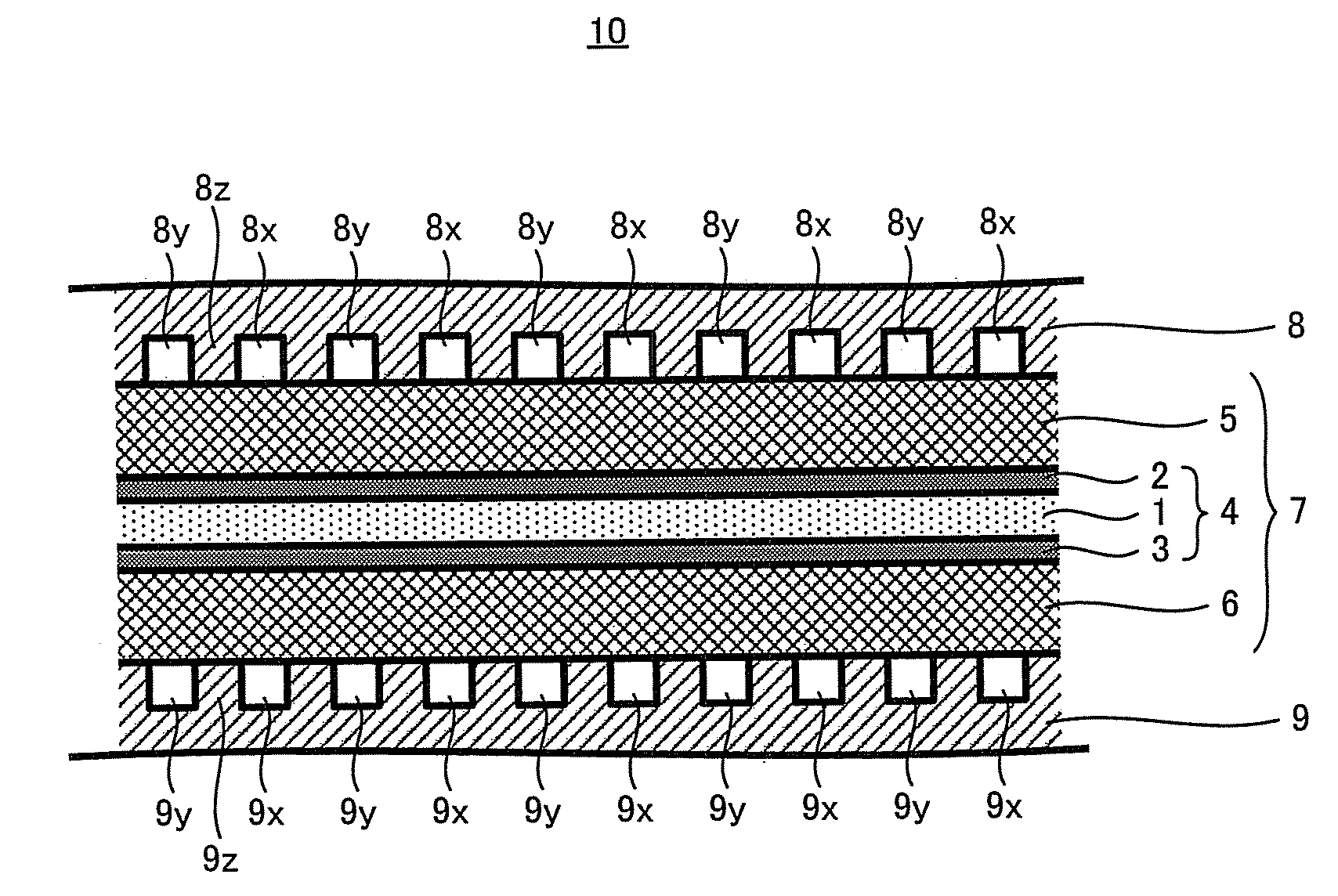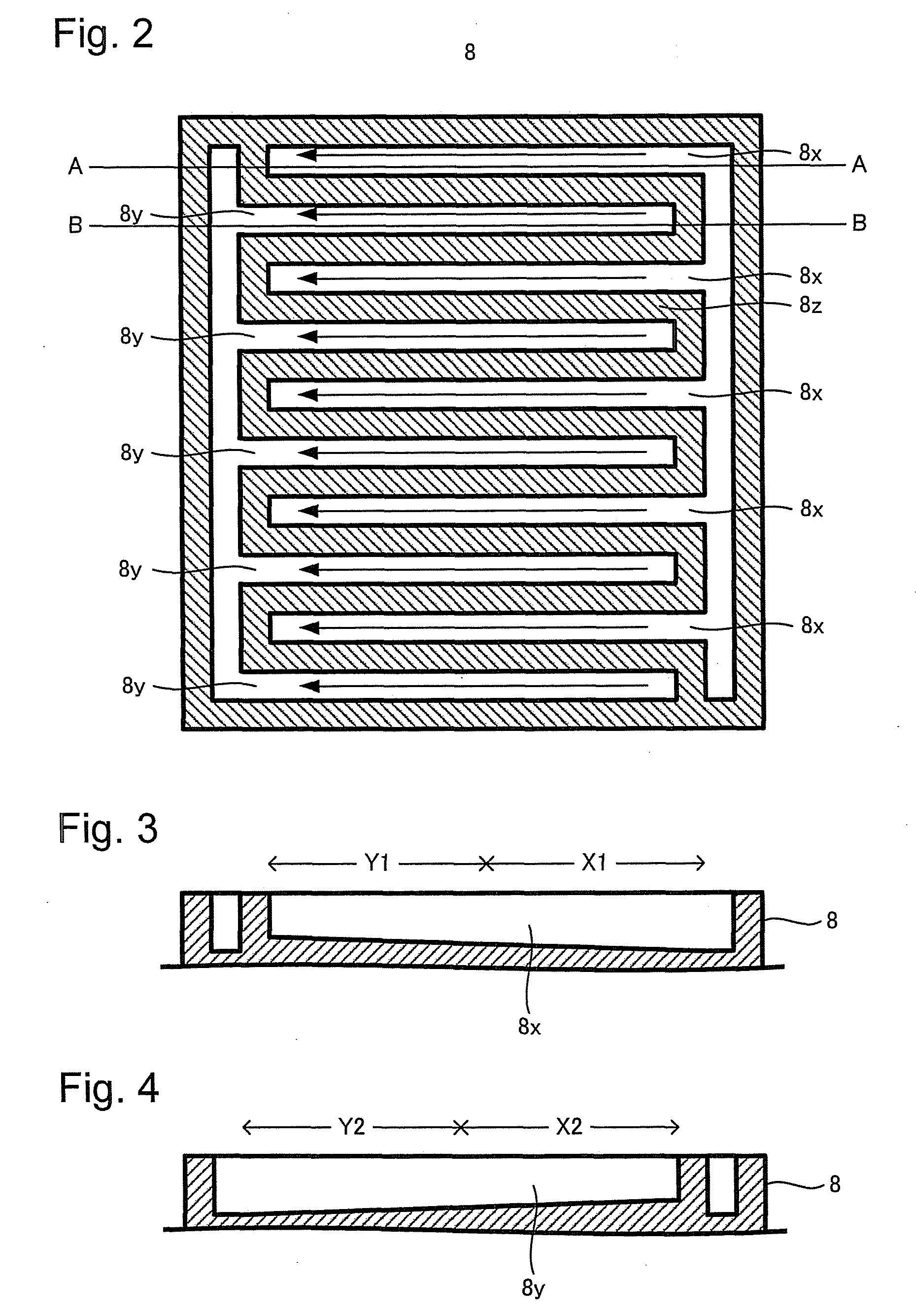Fuel cell
a fuel cell and fuel cell technology, applied in the field of fuel cells, can solve the problems of reducing the frequency of electrochemical reactions, affecting the efficiency of pefc, so as to reduce the flow rate of reaction gas passing, inhibit the desiccation of mea, and increase the side surface area
- Summary
- Abstract
- Description
- Claims
- Application Information
AI Technical Summary
Benefits of technology
Problems solved by technology
Method used
Image
Examples
Embodiment Construction
[0042]When operating PEFC, amount of water contained in the laminated body incorporating the MEA is different depending on the mode of the laminated body, structure of passage for hydrogen passing along the anode catalyst layer side, structure of passage for air passing along the cathode catalyst layer side, and operating condition; even in the surface of the anode catalyst layer and the cathode catalyst layer, mal-distribution of water can occur. Because of this, flooding is sometimes caused at a particular site in the surface due to the excessive water and other sites in the same surface cause desiccation due to the shortage of water. This phenomenon is attributed to the fact that, for example, the amount of water removed from the reaction gas differs depending on the site of the anode catalyst layer and the cathode catalyst layer.
[0043]The present inventors discovered that there is a relation between the flow rate of the reaction gas and the amount of water removed by the reactio...
PUM
| Property | Measurement | Unit |
|---|---|---|
| depth | aaaaa | aaaaa |
| electrochemical reaction | aaaaa | aaaaa |
| electric energy | aaaaa | aaaaa |
Abstract
Description
Claims
Application Information
 Login to View More
Login to View More - R&D
- Intellectual Property
- Life Sciences
- Materials
- Tech Scout
- Unparalleled Data Quality
- Higher Quality Content
- 60% Fewer Hallucinations
Browse by: Latest US Patents, China's latest patents, Technical Efficacy Thesaurus, Application Domain, Technology Topic, Popular Technical Reports.
© 2025 PatSnap. All rights reserved.Legal|Privacy policy|Modern Slavery Act Transparency Statement|Sitemap|About US| Contact US: help@patsnap.com



